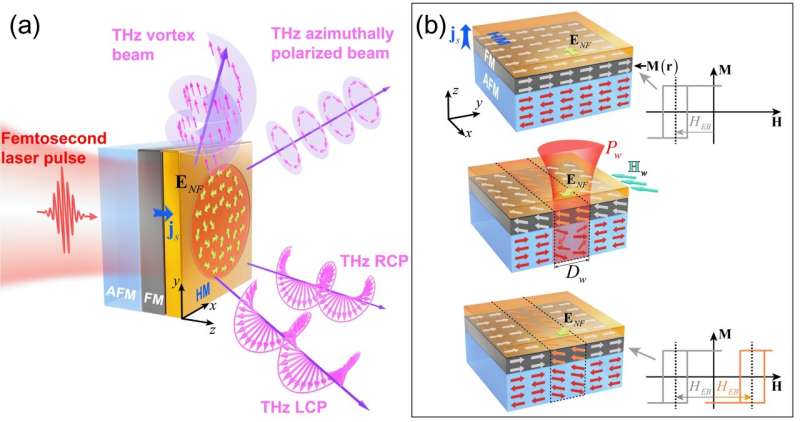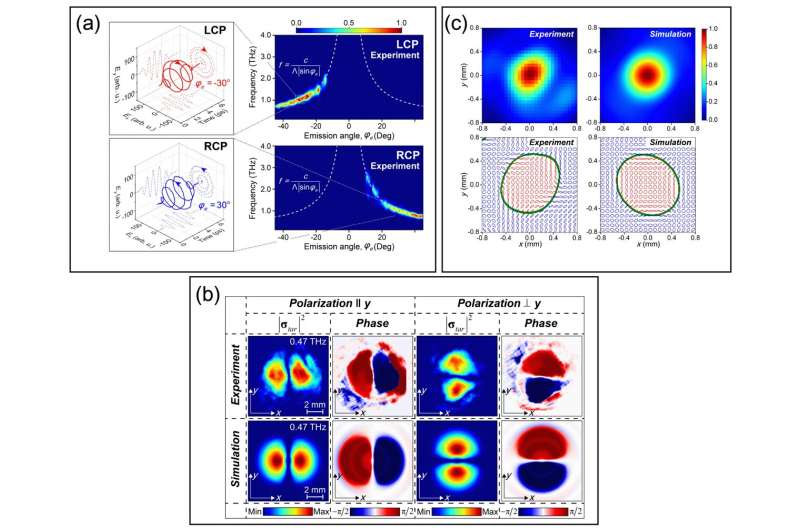This article has been reviewed according to Science X's editorial process and policies. Editors have highlighted the following attributes while ensuring the content's credibility:
fact-checked
peer-reviewed publication
proofread
New technique offers unprecedented control over light at terahertz frequencies

Researchers have developed a novel method for generating structured terahertz light beams using programmable spintronic emitters. This breakthrough offers a significant leap forward in terahertz technology, enabling the generation and manipulation of light with both spin and orbital angular momentum at these frequencies for the first time.
Terahertz radiation lies between microwaves and infrared light on the electromagnetic spectrum. It holds great promise for various applications, including security scanners, medical imaging, and ultrafast communication. However, generating and controlling terahertz light effectively has proven challenging.
This new research, published in eLight and led by Prof. Zhensheng Tao, Prof. Yizheng Wu from Fudan University and Prof. Yan Zhang from Capital Normal University, overcomes these limitations by employing programmable spintronic emitters based on exchange-biased magnetic multilayers. These devices consist of thin layers of magnetic and non-magnetic materials that convert laser-induced spin-polarized currents into broadband terahertz radiation.
"The key innovation lies in our ability to flexibly program the magnetization pattern within the emitter with high precision and high spatial resolution," graduate student and first author Shunjia Wang explains. "This allows us to design and generate terahertz beams with complex polarization states, including beams with spatially separated circular polarizations, azimuthal or radial polarization states, and even a full Poincaré beam."

A Poincaré beam exhibits all possible states of light polarization within its cross-section. This unique property has applications in areas like generating special optical forces, achieving flat-top intensity profiles, and single-shot polarimetry measurements.
The researchers successfully demonstrated the generation of various structured terahertz beams using their programmable emitters. These beams hold promise for advancing terahertz technologies in numerous fields.
"Our findings pave the way for the development of novel terahertz devices with enhanced functionalities," concludes Prof. Zhensheng Tao. "The ability to manipulate terahertz light with such precision opens exciting possibilities for applications in spectroscopy, sensing, and communication."
More information: Shunjia Wang et al, Flexible generation of structured terahertz fields via programmable exchange-biased spintronic emitters, eLight (2024). DOI: 10.1186/s43593-024-00069-3
Journal information: eLight
Provided by TranSpread




















